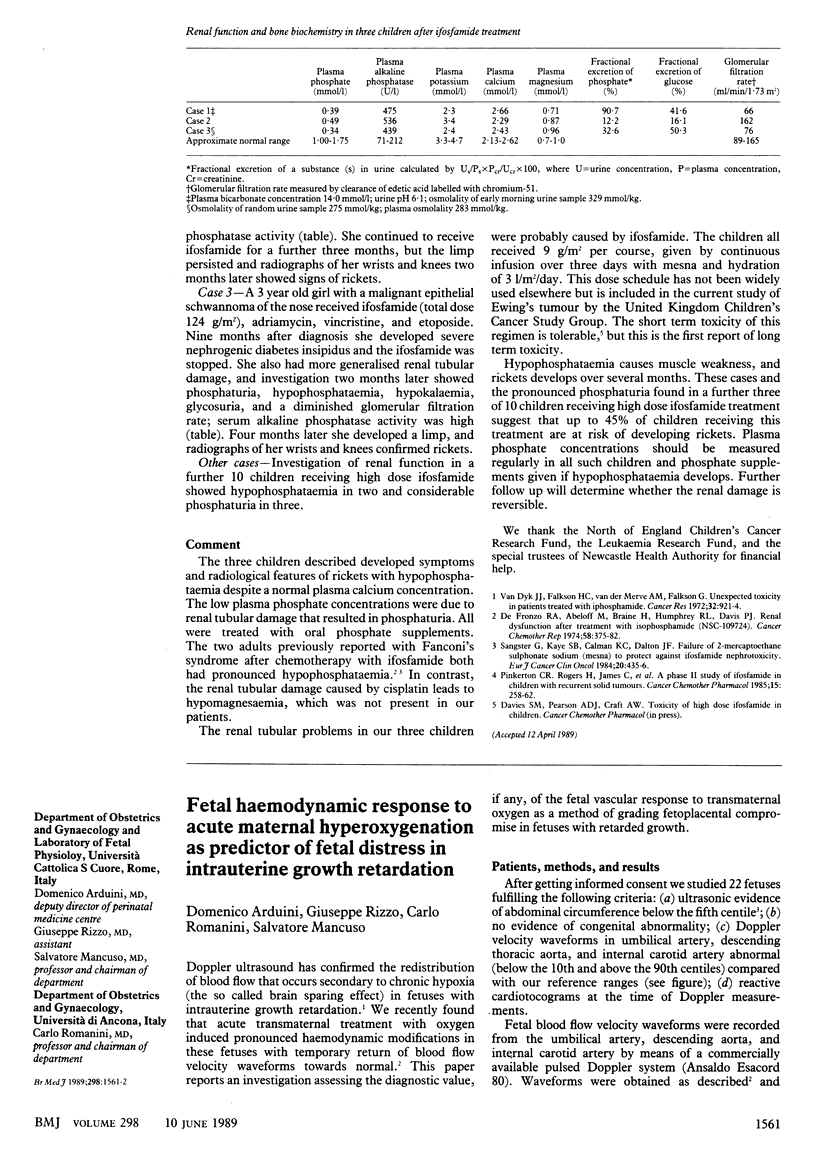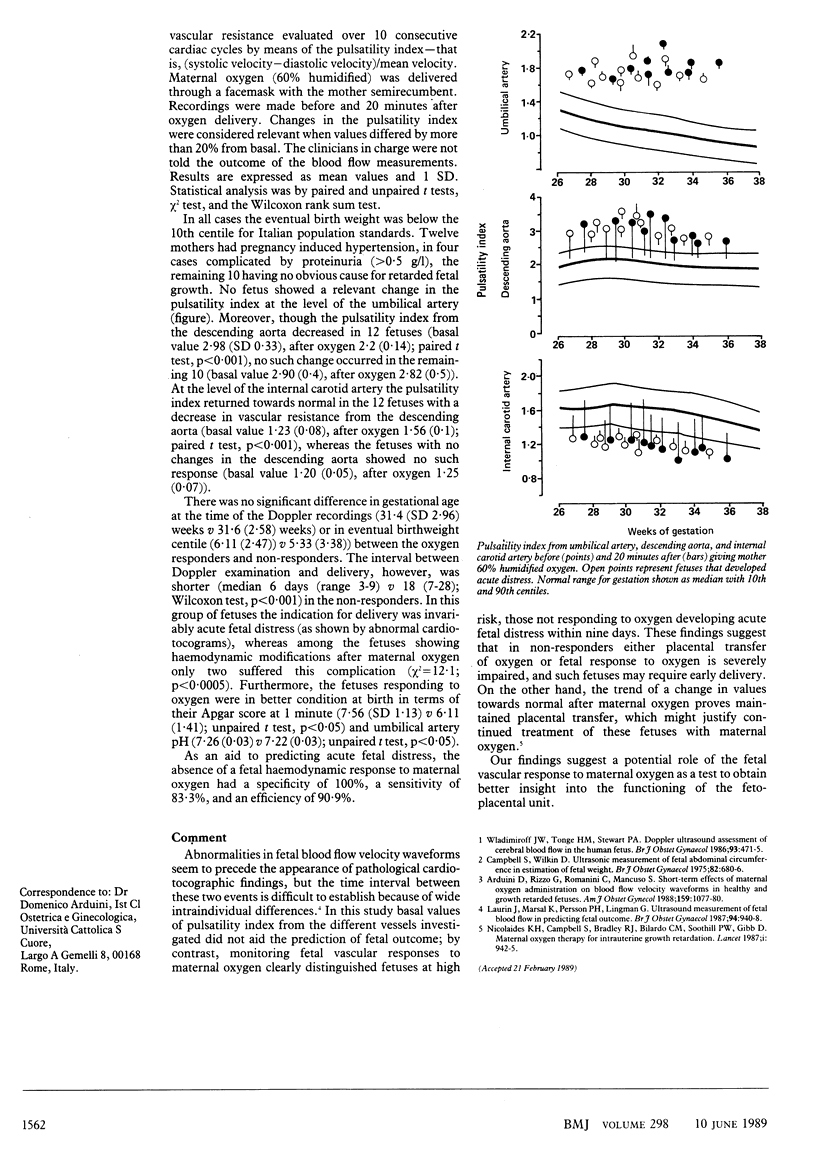Full text
PDF

Selected References
These references are in PubMed. This may not be the complete list of references from this article.
- Arduini D., Rizzo G., Mancuso S., Romanini C. Short-term effects of maternal oxygen administration on blood flow velocity waveforms in healthy and growth-retarded fetuses. Am J Obstet Gynecol. 1988 Nov;159(5):1077–1080. doi: 10.1016/0002-9378(88)90417-6. [DOI] [PubMed] [Google Scholar]
- Laurin J., Marsál, Persson P. H., Lingman G. Ultrasound measurement of fetal blood flow in predicting fetal outcome. Br J Obstet Gynaecol. 1987 Oct;94(10):940–948. doi: 10.1111/j.1471-0528.1987.tb02267.x. [DOI] [PubMed] [Google Scholar]
- Nicolaides K. H., Campbell S., Bradley R. J., Bilardo C. M., Soothill P. W., Gibb D. Maternal oxygen therapy for intrauterine growth retardation. Lancet. 1987 Apr 25;1(8539):942–945. doi: 10.1016/s0140-6736(87)90292-3. [DOI] [PubMed] [Google Scholar]
- Wladimiroff J. W., Tonge H. M., Stewart P. A. Doppler ultrasound assessment of cerebral blood flow in the human fetus. Br J Obstet Gynaecol. 1986 May;93(5):471–475. [PubMed] [Google Scholar]


